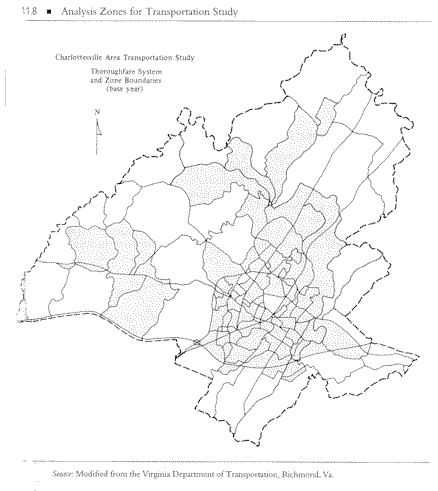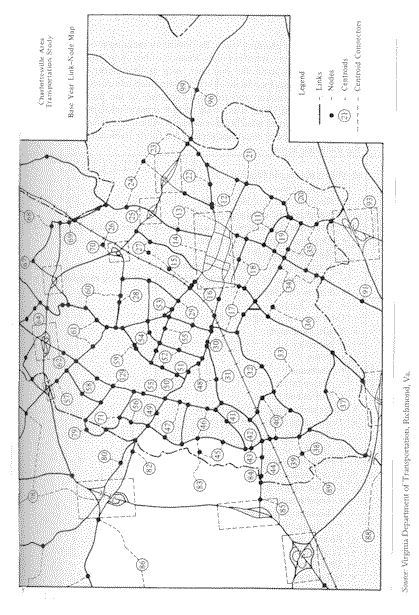
Description of the Study Area
Study Boundary
Before forecasting the travel for an urban area or region, the planner must clearly
define the exact area to be considered. These areas may be defined by the urban growth
boundary (UGB), county lines or town centers. The planning area generally includes all
the developed land, plus undeveloped land that the area will encompass in the next 20 to
30 years.
The cordon line denotes the boundary of the planning area. In addition to
considering future growth, the establishment of the cordon line might take into account
political jurisdictions, census area boundaries, and natural boundaries. The cordon line
should intersect a minimum number of roads.
Zones
The study area must then be divided into analysis units, or zones. This will enable the
planner to link information about activities, travel, and transportation to the physical
locations in the study area. The transportation analysis zones (TAZ) vary in size
depending on the density or nature of the development. In an urban area the TAZ may be as
small as a city block, but in rural areas the TAZ may be as large as 10 or more square
miles. The zones attempt to encompass homogeneous urban activities, which are all
residential, all commercial, or all industrial. Zones are designed to be relatively
homogeneous traffic generators and are sized so that only 10-15% of the trips are
intra-zonal.
An important consideration in establishing zones is their compatibility with the
transportation network. As a general rule, the network should form the boundaries of the
zones.
A study area that has been divided into zones is shown below.

Links and Nodes
Normally, a simple representation of the geometry of the available transportation
systems is included on the map of the study area. A system of links and nodes, or a
network, indicates roadways and other transportation routes. Links represent sections of
roadway (or railway etc.) that are homogeneous, while nodes are simply points at which
links meet. Usually, transit networks are developed independently of truck and automobile
networks. In the network description, zone centroids (centers of activity) are
identified; they are connected to nodes by imaginary links called centroid connectors.
Centroids are used as the points as which trips are "loaded" onto the network. A
diagram of a transportation network is shown below.

The figures on this page came from:
Garber, N.J. and Hoel, L.A., Traffic and Highway Engineering, Revised 2nd
Edition, PWS, Pacific Grove, CA. 1999. Pg. 499 and 501
|